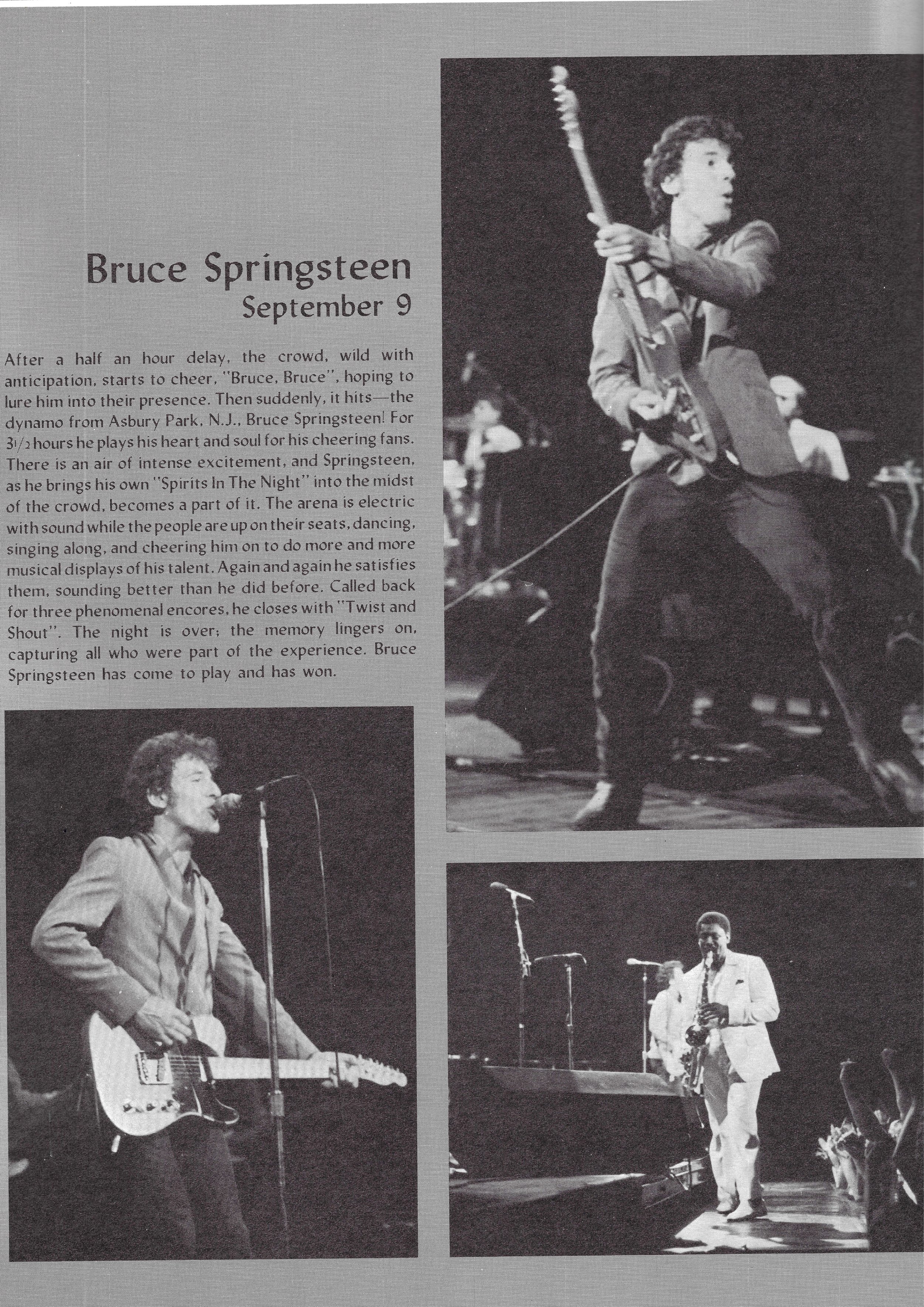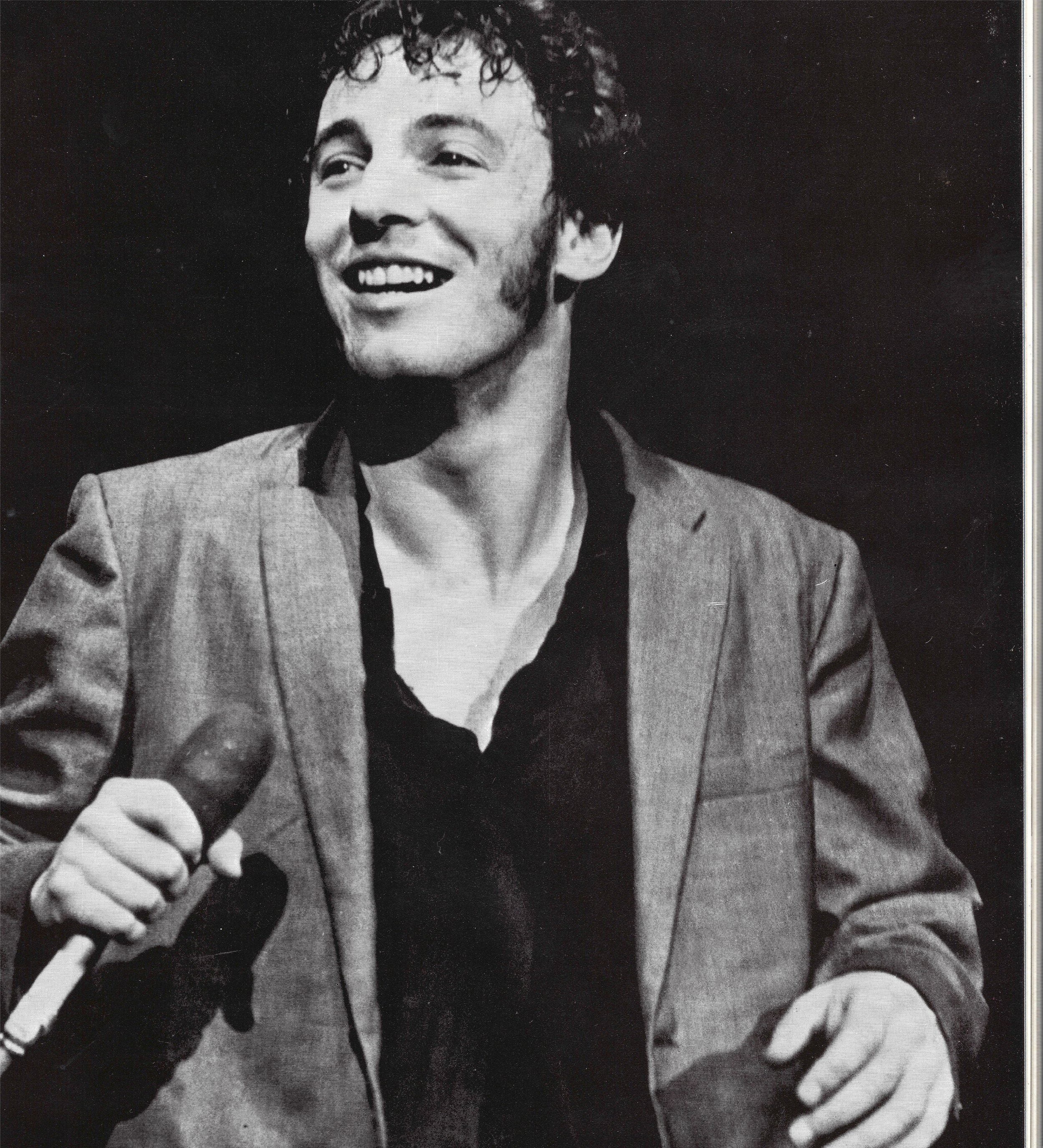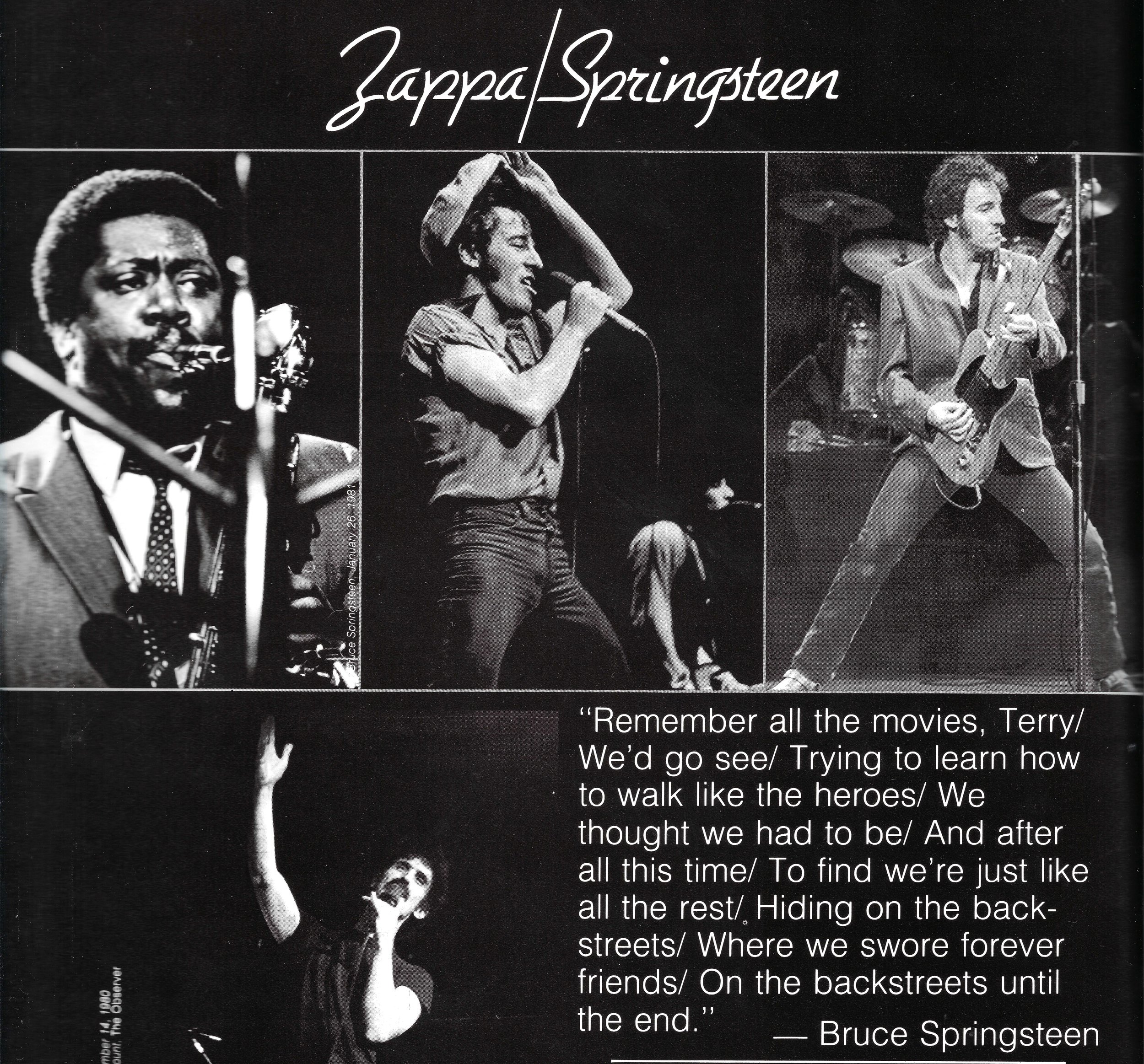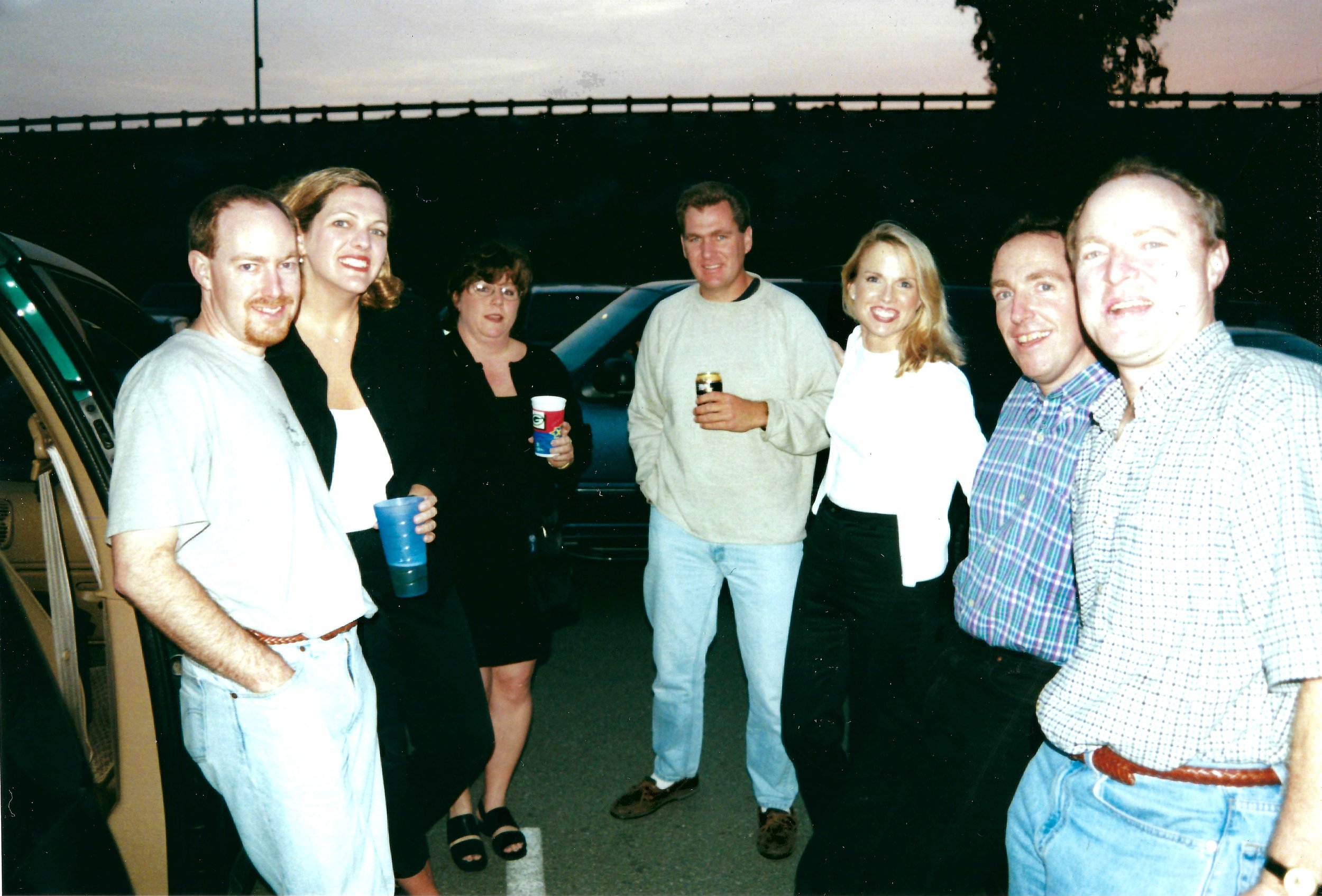Land of Hope and Dreams
I saw Springsteen in concert recently, with Nell and my sister Nora. It had been a dozen years since I’d seen him, and I certainly hadn’t forgotten what a force of nature he is, what a religious experience his concerts are. But I hadn’t expected him and the E Street Band to, at their advanced ages (which I am creeping ever closer to), still just absolutely blow out a concert hall and leave their audience, their fellow travelers, physically and emotionally exhausted, but with a new lease on life. He started on time and played for three and a half hours, with really no break. And he has done this for over fifty years! He’s 74, for chrissakes! And beyond his stated objective of absolutely knocking your socks off, his concerts, his music have always been about something, something even beyond the power of music to make you realize that it ain’t no sin to be glad you’re alive. There are recurrent themes of faith, suffering, trial and loss coursing through his music, as well as the dignity and real heroism of the workaday life, and, in the end, there is redemption. Perhaps this is what has drawn me to his music for most of his 50+year career.
In a way, I have grown up with Bruce. I first heard of Bruce in 1975, the year he appeared on the cover of both Time and Newsweek, after music critic (and Bruce’s future producer) Jon Landau famously proclaimed, “I have seen rock and roll’s future and its name is Bruce Springsteen.” I didn’t read Time or Newsweek then; instead Bruce came across my radar screen courtesy of boyhood friend Jon Wilder. Jon lived two blocks from us, and his bedroom, on his record player, was where my twin brother Terry and I, high school juniors at the time, first heard Bruce. Jon himself was a guitar player and music aficionado whose guitar hero was Hendrix. He had the Born to Run album; Terry and I subsequently picked it up – no doubt at the record store in Westchester, on the other side of LAX - and played the hell out of that album in our back room at our house. My brother Dennis, 11 years our junior, who bunked with brother Dan in the front of the house, recalls hearing us play it incessantly in that back room.
We had never heard anything like it, and played it so much that the record developed skips; we had to put a nickel on top of the stylus to weigh it down and keep it on the vinyl. We liked it enough that we went and bought his two previous albums, Greetings from Asbury Park and The Wild, the Innocent and the E Street Shuffle. Greetings, his debut album, is Dylan-esque in its sprawling, lyrical story-telling, and indeed, Columbia had signed Bruce as a solo artist, to perhaps become the next Dylan (Bruce, though, wanted to rock with his band). It’s amazing to me that he wrote these first three brilliant albums when he was in his very early twenties. They have stood the test of time - and most of us hadn’t done anything of any real worth by the time we were in our early twenties.
The Bruce thing followed Terry and me to college at Notre Dame, where we met East Coast and Midwestern kids just as obsessed, if not more so, with Bruce. Back in those days alcohol was allowed in the dorms, and I can recall at least one party in a dorm room with everyone singing Born to Run so loudly that that it shook the light fixture loose in the room below.
Terry and I first saw Bruce in concert in 1978, during the summer between our freshman and sophomore years at Notre Dame. It was only the second concert I had ever been to (the first was Linda Ronstadt at Notre Dame my freshman year, when she famously told the crowd of repressed Catholic youth that she had always wanted to seduce a priest; we subsequently went nuts).
Terry and I sat fairly far back on the floor at the Forum in LA, and Bruce and the E Street Band were touring off their recent Darkness on the Edge of Town album, his fourth. Bruce and his band came out in three-piece suits, and our mom was pretty impressed when we told her that later. And if you don’t think that the sight of the Big Man, Clarence Clemons, in a bright orange-ish bell-bottomed three-piece suit, blowing that huge sax, isn’t stirring, then go find it on YouTube and see for yourself. Bruce’s first three exuberant albums had a common theme of let’s get the fuck out of here: tramps like us, baby we were born to run; it’s a townful of losers and I’m pulling out of here to win. On Darkness, though, Bruce pulled a u-turn, headed back into town, so to speak, and honored his gritty small-town background and the folks, like his parents, who gutted it out, went to their stultifying, life-sucking factory jobs, and took what small pleasures they could from life. They were the true heroes. This was somewhat lost on me at the time, as I was still stuck in the hemi-powered drones, chrome-wheeled and fuel-injected, of Born to Run. Those machines bore little resemblance to the family station wagon I occasionally drove at the time, but no matter.
When I returned to Notre Dame in late summer that year, I saw Bruce again. He and the E Streeters stopped and played a concert at Notre Dame, which is just remarkable to think about today. It was before he started playing big stadiums – that would come in 1984, after release of his megahit Born in the USA album – and in 1978 he played in the hoops arena at ND. South Bend was located between Chicago and Detroit, so it was a relatively easy road trip for bands of the day. Bruce had played at ND before, in 1976, and that’s when he developed a special relationship with the ND students. Apparently, at the ’76 concert, Bruce had played all of his material and was looking for another song to play. A student yelled out a request for Double Shot of My Baby’s Love, first released by the crew-cut Swinging Medallions in 1966, and later described by Bruce as the greatest fraternity rock song ever written. Still, it was a somewhat obscure request, and, ironically, Notre Dame had no fraternities (and still doesn’t; dorm life itself is suitably Animal House-like at ND). Bruce and his band made a quick arrangement, worked out the key, and launched into it. Well, Bruce played it again at ND during that ’78 concert, and indeed, ND is the only venue where he has ever played the song. Made us feel kinda special, you know?
Bruce and the E Street Band “dropped by” Notre Dame again, in the winter of my senior year. In those days, and at that venue, it certainly wasn’t as hard to score Bruce tickets as it has now become, and I was able to get two tickets in the sixth row. But I didn’t take my girlfriend Mary; I instead took my Bruce-loving roommate, Ed. Closest I’ve ever been to Bruce. And guess what? He played Double Shot again, as well as Louie Louie.
Over the years, I have seen Bruce as much as time, opportunity, and my budget have allowed, and that adds up to about a dozen times. And believe me, that is nothing. Nora has seen him at least three dozen times, my brother Dan over 40. Nell’s friend Becky is married to Phil, who has seen Bruce over 50 times. Of course, Phil is a Jersey boy, and seeing Bruce may be something of a birthright for residents (of a certain age) in that state.
Much has changed in my life in the almost 50 years I’ve been listening to Bruce and seeing him in concert. Marriage(s), kids, career, retirement. Much has changed for Bruce, too, during that time, though he is anything but retired. He went from playing small clubs on the Jersey shore and “sleeping on the beach all night”, chasing factory girls, to playing huge stadiums and halftime at the Super Bowl. Private gigs at the White House, induction into the Rock and Roll Hall of Fame, receiving the Presidential Medal of Freedom. A couple of marriages. Loss of relatives. Loss of band members. By our age, a lot of shit has happened. These changes have been reflected in his music, his concerts. Certainly Bruce’s Tunnel of Love album reflected his struggles with relationshiops.
And these days he acknowledges his – our - experience of loss. Two original E Street band members have passed: keyboardist Danny Federici, of cancer, and the Big Man, Clarence Clemons, of a stroke. The show goes on, and in the latter case, Clarence’s sax has been replaced by that of his nephew Jake, who more than capably fills his uncle’s shoes (though Jake of course doesn’t have the height or the girth, the large presence, of the Big Man). Bruce’s parents have also passed. Growing up, Bruce had a rough relationship with his father, who drank a six-pack of beer nightly, and who years later was diagnosed with paranoid schizophrenia. Some of Bruce’s early work references these rough times, but as the years passed Bruce developed empathy and understanding for his father and the demons he battled. Of our departed loved ones, Bruce said, in concert, that he doesn’t know where they go. “But if you’re here,” he said, pointing to the crowd, “and we’re here, then they’re here.” Hard to argue with that.
I believe Bruce concerts are best seen with family or close friends, fellow Bruce-ophiles, and indeed, my brothers and sisters and I have been attending Bruce concerts together for decades. I’m not saying we’re obsessed, but when we like something, we REALLY like it. You can name a number of things that our family REALLY LIKES. Besides Bruce, there’s Notre Dame, the Dodgers, See’s Candy (a West Coast birthright), and Lake Almanor. Maybe even throw in Lawry’s Prime Rib, where we’ve been celebrating our dad’s birthday for decades. These are the ties that bind, I suppose, and Bruce is one of them.
We all have our favorites we’d love to hear in concert, the songs that might even make us tear up. For Nora, that’s Bobby Jean; for me, it’s Land of Hope and Dreams (we got both of those at the most recent concert!). Land of Hope and Dreams offers just that, hope; all you have to do is just get on board the train. Don’t need no ticket. Saint or sinner, doesn’t matter, we’re heading to a land where sunlight streams. This really speaks to me because this isn’t nihilism, this isn’t rebellion just for the sake of rebellion. There are better days out there, and this current of redemption runs through Bruce’s music. If this sounds, well, Catholic, it just may well be, though Bruce never says so outright. His songs are shot through with Catholic imagery and themes, and it’s evident that, try as he may, Bruce has never outrun his 1950’s-era Catholic upbringing, the type practiced by his blue-collar Irish-Italian family, and characterized by the corporal punishment-wielding nuns at his grade school, St. Rose of Lima. As oppressing as this may seem, it is also a faith that offered redemption, transformation, and relief (ultimately) from suffering.
Bruce has been a prolific song writer, and those songs which made it onto his records are just a fraction of his work. He has seemingly hundreds of songs which never scored the vinyl, but many of them surprisingly and joyfully make his concert setlists. That alone will keep you coming back, and there is a treasure trove of live performance recordings that you can spend the rest of your days listening to. Still not enough? Pick up his autobiography, Born to Run (of course) which took him six years to write. Like many brilliant people, Bruce has battled his own demons, including depression. It’s all there in his unsparing yet lyrical prose. Better yet, download the audible version, so you can listen to Bruce tell his story in his own words. Eighteen hours’ worth of Bruce storytelling. That’ll get you through a few road trips.
Now, I fully realize that you shouldn’t need a Bruce concert, or his music, to make you see that life has meaning, that there are causes worth pursuing, social injustices worth correcting,relationships worth work and commitment, and better days out there. Those beliefs should be part and parcel of your persona, of the person you are, of your modus vivendi, especially at my advanced age. But I tell you what, it’s been a little difficult to see hope, as of late. The inevitability of climate change and the refusal of nations to remedy it, the kidnapping of our country by darker forces, those who would destroy it and democracy, the surge in racism, anti-LBGT sentiment, gun violence and just outright lying. Mean-spiritedness. It’s enough to make one think about just disengaging and spending the rest of one’s days hiking and growing tomatoes.
But then again. There is work to be done, and if Bruce’s workaday heroes can head back into the factory every day, then so can I.
No retreat, baby no surrender. We swore blood brothers against the wind. Now I’m ready to grow young again.
Bring on your wrecking ball…



